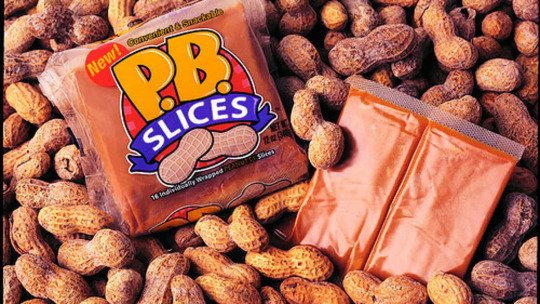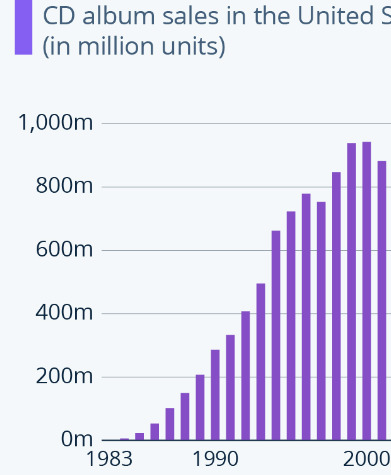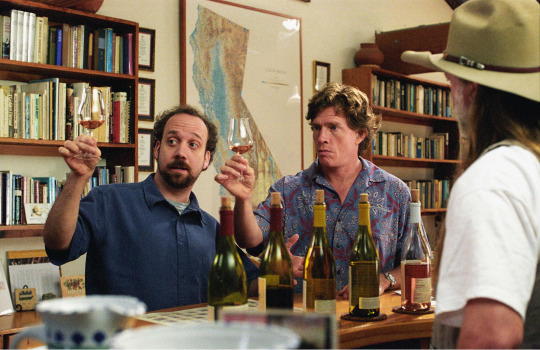Text
A modern-day branding Nostradamus
Given the case was written in 2002, I endeavored to make my predictions based solely through the lens of one in 2002 (that way I wouldn't benefit from hindsight).* However, the promise (or lack thereof) of each of these products is so readily apparent that I found this to be a simple ranking.
My ranking of the products in terms of future promise are as follows:
DigiScents iSmell
Sliced peanut butter
Silver-coated bandages
Satellite radio
DigiScents iSmell
This is the clear and obvious winner of the four products. My initial inclination was that all PC owners would have their own iSmell by the end of 2004, let alone 2024. However, I've since realized that iSmell will likely be limited by their production capacity. Given that, I think it's likely that it will take several years of ramp up before iSmell becomes ubiquitous. That said, it has everything going for it: PC purchases are undergoing a meteoric rise, people are looking for new sensory experiences without leaving their home, and the technology underlying the product appears to be very advanced. The marketing for the product is a slam-dunk; it even looks cool:

Sliced peanut butter
This the second (and final) can't-miss product on the list. Americans are living their lives on-the-go more than ever. This can be seen with the rise of the "mobile" phone (although I predict this is a trend that will die out in the coming years), the popularity of roller blades, and the increasing frequency of eating lunch at one's desk. While the interview with the sliced peanut butter creator really does say it all (who among us hasn't experienced the frustration of getting peanut butter all over oneself while simultaneously tearing the bread and losing the knife during a late-night PB&J creation?), it is worth reiterating just how revolutionary this product will be to the market. No longer will the average American need to carry around their jar of peanut butter in their back pocket along with their jar of emergency peanut butter in their fanny pack—adding bulk and anxiety regarding the dreaded "peanut butter blowout." Instead, they will be able to carry 10–15 PB slices, saving both space and time. This is particularly relevant in the post-9/11 world we live in, where it has become a piles of peanut butter jars overflowing out of trash bins near TSA security having been flagged as containing too much fluid have become a common sight.

Silver-coated bandages
We live in a society where everything has its place: silver is for jewelry and bandages are for the weak. While I am technically speaking not a "medical doctor," I did grow up in the same town as one. Thus, I know that most cuts and scrapes are best served not by some highfalutin silver antibacterial elixir, but by rubbing some dirt on them. I believe I represent most Americans when I say that this product will never take any hold on the market, unless they are able to rebrand: instead of being silver-coated bandages, they should become bandage-shaped jewelry. Provided the price point is correct ($400+), this could easily become a statement piece worn by those in the medical community.

(image created by generative AI, another fad)
Satellite radio
While well-meaning, this endeavor is entirely misguided as it's premise is ridiculous. People do not want fewer ads or monthly payments. Research has shown that advertisements actually increase the enjoyment viewers feel when watching television (https://www.reuters.com/article/idUSTRE5131EU). Further, it is beyond absurd to think that consumers will pay a monthly fee to listen to music that they will not even own. The chart below demonstrates the dramatic rise in CD sales every year, clearly showing that Americans are not willing to pay merely to listen to music: they want to listen to free music with ads (traditional radio) and pay to own music in their homes (CD albums).

* Despite how funny it would have been, I opted not to write this article from the perspective of my eight-year-old self in 2002.
1 note
·
View note
Text
Sideways
Miles: It tastes like the back of a fucking L.A. school bus. Now they probably didn't de-stem, hoping for some semblance of concentration, crushed it up with leaves and mice, and then wound up with this rancid tar and turpentine bullshit. Fuckin' Raid.
Jack: Tastes pretty good to me.

Earlier this year I watched the movie Sideways, the source of the above quote. In the film, wine aficionado Miles (Paul Giamatti) takes his friend Jack (Thomas Haden Church) to California wine country for a weekend of wine tasting and golf prior to Jack's wedding, and hijinks ensue. As can be seen from the quote above, Miles is an extremely knowledgeable consumer of wine, able to distinguish all types of nuance in each sip of wine. Jack, on the other hand, merely buckets wine into one of two categories: good or not good.
I fall into the Jack category—I can drink wine and tell you if I like it or not, but I lack the refined palate necessary to in any way tell you what it is I enjoy about a given wine. This is not for a lack of trying, in fact I went my own weekend trip to California wine country with a friend of mine in 2021 where he took me to several vineyards he was a member of and we enjoyed a number of delicious wines (the first photo below). In spite of this, all of the information given by the various sommeliers went into one ear and out the other. My other wine tour experiences, in Virginia and New Zealand (photos two and three below), were similarly enjoyable if uninformative towards my wine tastes. Truth be told, I couldn't tell you on which of the three tours I had the best wine, but I'm sure my experience on each was enhanced by the wineries assurance that their wine has global recognition and scored a 96/100 in Wine's Weekly (or something to that effect).
But Leo, you ask, how does this affect your purchasing habits when it comes to wine? To that I would respond, "Great question—I'll get there shortly, I just wanted it to be clear I am a classy guy who goes to wine tastings even if I don't have particularly elevated tastes." When purchasing wine, my process generally follows this pattern when I don't have someone with me to pick for me:
Find the white wine section (not a fan of red and I don't have a process for rosé)
Identify the price range I am looking for (definitely under $30, ideally $18–20)
Avoid brands I've heard of (I don't know anything about wine, so why would brands I know be any good?)
See if any of the Sauvignon Blancs or Chardonnays have appealing bottles (I think I like those but I am pretty sure I like others too, such as Riesling sometimes but not always but who knows what determines whether I like it a given time or not)
Pick the one with the most tempting bottle (classy label, from a country I believe probably makes good wine—sorry, Bulgaria—, maybe a cork?)
From the perspective of the Chilean wine industry, this is probably not their ideal methodology for a consumer to use. Perhaps if there were an app that allowed me to rate each wine I consumed then used machine learning to identify 1) the characteristics I enjoy and 2) which wines I should buy, that would be effective at refining my purchasing habits. But to be honest, I don't think I enjoy wine enough to put that effort in, so I will likely stick with the above strategy.



1 note
·
View note
Text
Confessions of a tech support son
As the oldest child in my family, I am the one most frequently relied on for any type of tech support that my parents (or younger siblings) need. This can range from "the internet isn't working" to "how do I make the text on my phone bigger" to the bane of my existence "the TV in the basement is not working again."
For this exercise, I've attempted to create a customer journey map from my perspective where the "customers" are my parents:
Stage 1: Awareness
Actions: Notice a change in TV behavior (e.g., no picture, sound issues). Likely try turning it off and on again.
Motivations: Frustrated with the malfunctioning TV system. Desire to restore normalcy and enjoy their favorite shows/sports.
Questions: "What's wrong with the TV? Is it broken? How do I fix it?"
Barriers: Fear of causing more damage, lack of understanding of TV system setup.
Stage 2: Contact
Actions: Call me to explain the problem. Express that they did not do anything different from usual but that my sister may have messed it up when she was watching a movie.
Motivations: Hoping I can fix it remotely or offer guidance. Feeling irritated but wanting a solution.
Questions: "Can you fix this?" "Why is this so complicated"
Barriers: Difficulty expressing the problem clearly, lack of technical vocabulary, frustration with recurring issues.
Stage 3: Service
Actions: Follow my instructions carefully over the phone (e.g., turning off and on, pressing the input button).
Motivations: Wanting to fix the TV and avoid further disruption. Feeling a sense of relief as things appear to resolve.
Questions: "Why does this always happen? What if it doesn't work?"
Barriers: Difficulty following instructions from someone who cannot see the remote and is mostly guessing (me), limited technical skills.
Stage 4: Retention
Actions: Use the TV successfully, express appreciation to me.
Motivations: Feeling happy and relieved that the TV is working again. Feeling grateful for my help.
Questions: "What if it breaks again? Can you tell your sister she needs to make sure the tv works when she is done with it?"
Barriers: Uncertainty about future problems, lack of confidence in their own technical abilities.
2 notes
·
View notes
Text
Black & Decker, more like Best for making a Deck
Black & Decker is getting drastically outpaced in the Professional-Tradesmen segment, despite being the market leader in Professional-Industrial and Consumer. This is counterintuitive, as one would expect the Pro-Industrial segment to be purchasing the highest quality tools, and one would expect the Consumer segment to be purchasing the best known brand. Thus, one would expect the tradesmen to seek out B&D based on the preferences in the other segments.
However, it is clear from the case that the Tradesmen segment does not follow the Industrial segment. In general, they appear to rely more on their own perceptions of tools and brands than they do the (likely in-depth) research done by professional industrial buyers. It is clear that Tradesmen associate the B&D brand as a general consumer brand, likely due to it's dominance in that segment, and are not aware enough of the differentiation between their Professional tools and Consumer tools. This is likely at least partially due to the lack of color differentiation between the two—while most brands have more colorful professional tools (e.g., Teal, Red, Green), B&D's are Charcoal Grey, close to the Black of their Consumer tools.
In order to increase their share in the Tradesmen segment, B&D should do a rebrand of their Professional tools in order to differentiate them from the Consumer tools. Given we know quality and awareness are not an issue with B&D tools, this will likely be a straightforward change: swap the color and add a sub-brand (e.g., Piranha by Black and Decker). Given the strength of the overall B&D brand, they should keep it in the name, but make it clear that it is a different line from the consumer brand. This should not adversely affect Professional-Industrial sales as that line has the most sophisticated buyers who will not be confused by the change, and should help convince the Professional-Tradesmen segment that when they buy a Professional-level tool from B&D they are getting something higher-end than what their family uses at home.
2 notes
·
View notes